Ken’s father’s family originated from Croatia, and like other immigrants they brought their home country food traditions to America. One that has survived to the present day in our family is the time-intensive and resource-intensive walnut-filled coffee cake known as povitica.
It’s not a particularly sweet bread, since Eastern Europe traditionally did not have easy access to sugar, and the key flavors are meaty walnuts combined with the slightly sour flavors of yeast bread and sour cream.
The recipe and the technique have been been passed down through the generations — from Ken’s grandmother, who spoke very little English, to her daughter-in-law who used her own childhood Polish language skills to glean information about her husband’s favorite treat, to her daughter-in-law (me) who loves to bake yeast bread and luckily did not need to know any Eastern European languages to learn the family tradition.
Grandma made her bread entirely from memory, while my mother-in-law, a shorthand-loving executive assistant, developed pages and pages of instructions for reference in making the bread.
Now I make povitica every year for Christmas and Easter, using a recipe that I’ve refined myself over the years and modernized to reflect technological developments like food processors and convection ovens.
The bread itself is a typical double-rise yeast bread. The dough base is made with flour, yeast, and some salt, with moisture added from a few eggs, scalded milk and melted butter. After kneading the bread thoroughly, the dough gets to rest while the yeast do the work of doubling the size of the dough.
Meanwhile, I make the filling, which is an easy task with modern appliances. The main filling ingredient is walnuts, and Ken remembers helping Grandma prepare to make povitica by shelling hundreds of walnuts by hand, then grinding up the nuts into a fine paste-like consistency using a hand-operated grinder. What used to be days of work is now a fast process, thanks to Costco’s giant bags of shelled walnuts and a food processor.
There is a limit to how much nostalgia I want to experience when making this traditional food — I am thrilled every time I see the food processor make short work of grinding the nuts to a paste and have no desire whatsoever to experience hand-shelling of pounds of walnuts.
Once the dough and filling are ready, it’s time to assemble the bread, which is the most technically challenging part. The dough first needs to be rolled out to a very thin sheet, which is then covered with the filling and rolled up to make the distinctive spiral appearance of the bread. A rolling pin is an absolute necessity to roll out the dough. I love my fancy ball-bearing rolling pin, but I understand that Grandma rolled out a mean povitica using a classic tapered stick.
My mother-in-law’s crazy but effective method is to roll the dough out onto a floured sheet or pillowcase. The cloth provides a surprisingly good surface to avoid having the dough stick, while you are steadily working to make it as thin as possible and reach an approximately square shape.
Once the dough is as thin and large as possible, it’s time to spread the walnut filling evenly across the entire surface. Then, the genius of the sheet/pillow becomes truly apparent — it’s the perfect vehicle to help roll the thin, heavy, wet log of dough and filling.
Working from one of the long ends, the cloth can be picked up to roll the entire log without puncturing the dough or spilling the filling everywhere. Once the dough is in a single rolled log, it gets transferred to the baking dish and coiled into a snail-like spiral.
One of the few items that we inherited from Grandma was the cheap enamel pan that she used for scores of years to make her famous breads for the whole family. It’s the unassuming white pan seen in several pictures here.
I’m honored to be carrying on the family tradition using Grandma’s own pan. It’s also a reminder of how much kitchen technology has advanced — it’s hard to imagine the poor tools and the sheer physical labor that used to be part of cooking.
Once the dough is in the pan, it gets to rise again, then is brushed with butter so the surface will withstand being cooked for a really long time. It takes an hour in the oven for the heat to fully penetrate to the center of this moist, doughy, nutty spiral.
Once it comes out of the oven and the bread cools thoroughly, it’s time to cut into the bread and reveal the distinctive and festive spiral patterns created by the rolling process.
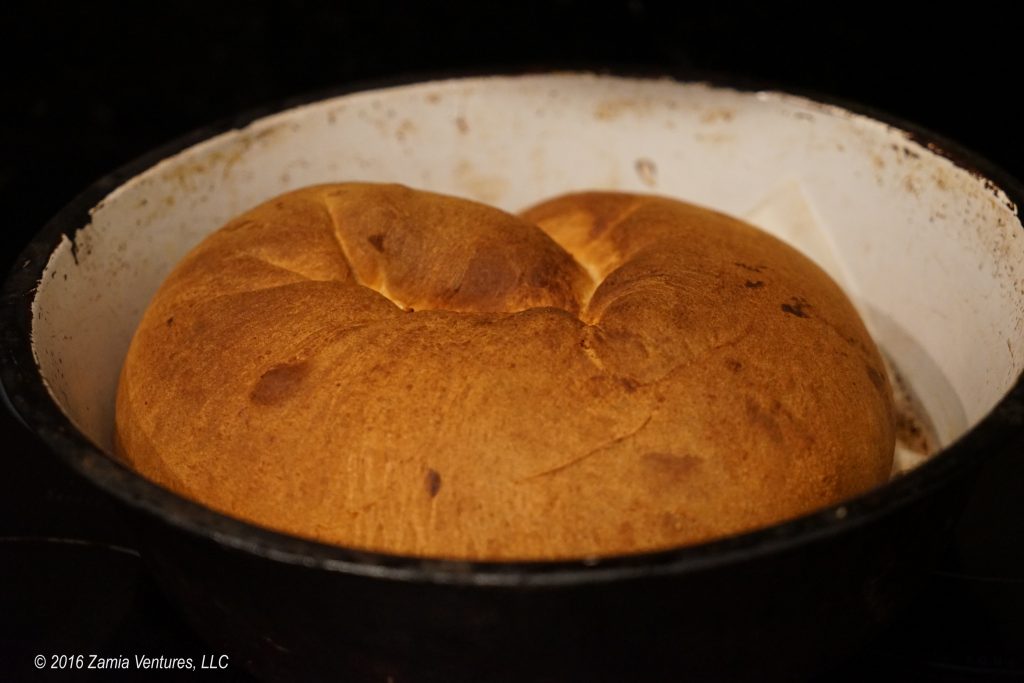
When making this bread for our Christmas celebration, I was using up a bag of walnuts and went a little overboard with the amount of filling. However, some might argue that you can’t ever have too much filling! We enjoyed our povitica, and the long family tradition that it represents, this morning with our Christmas breakfast.
From our house to yours, best wishes for the Christmas holiday! If you want to tackle this traditional bread, feel free to try my Povitica recipe here. Tell me how it goes!
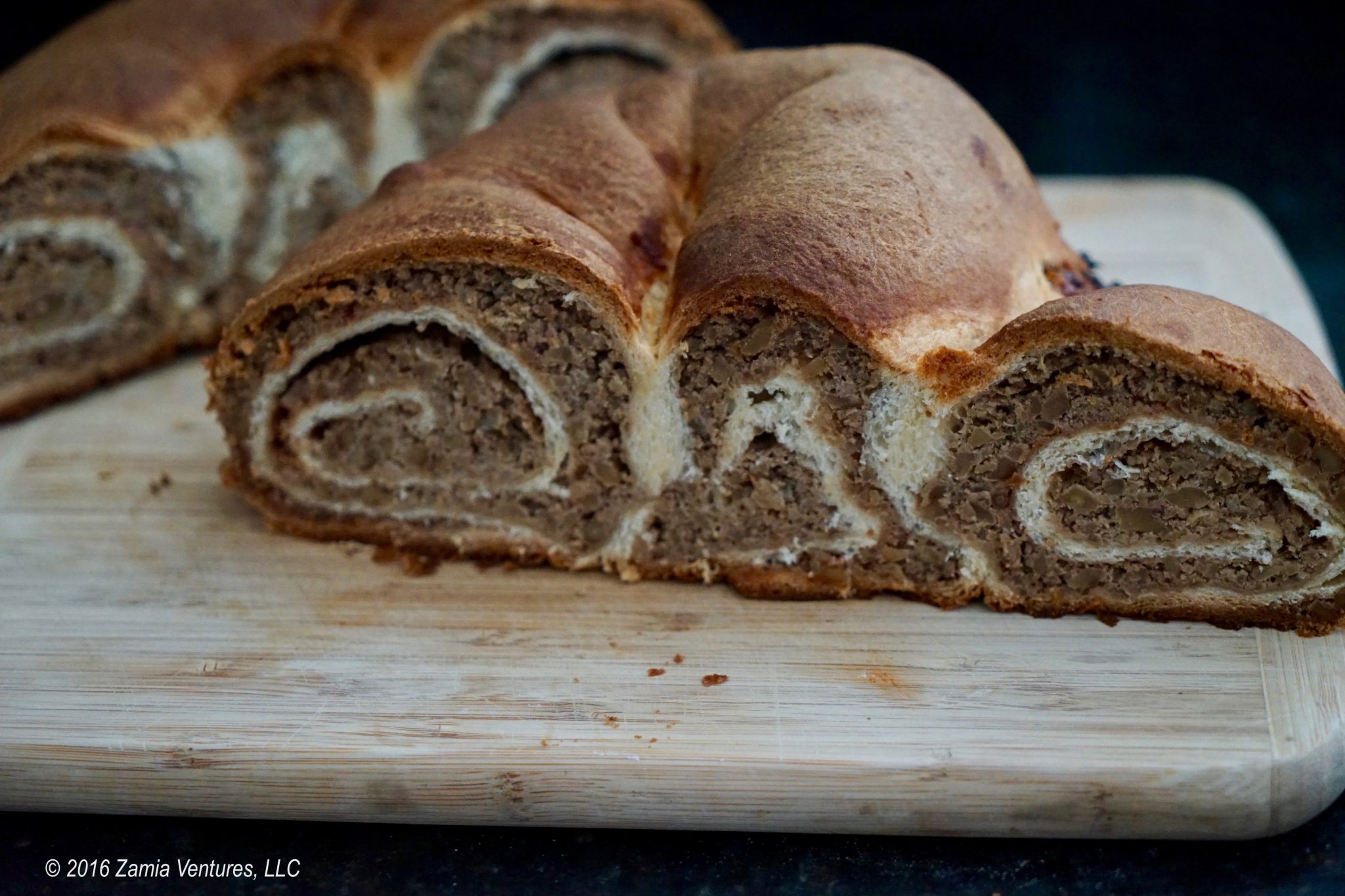
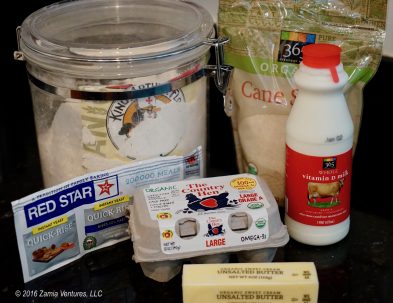
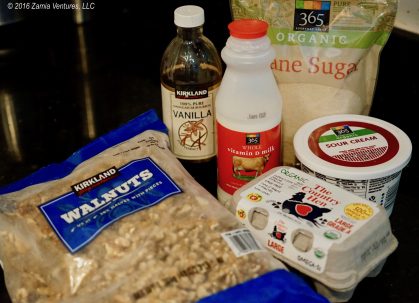
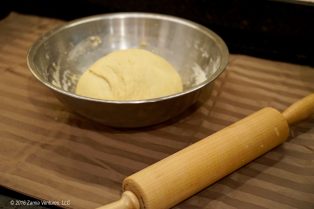
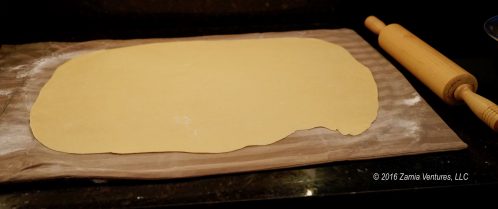
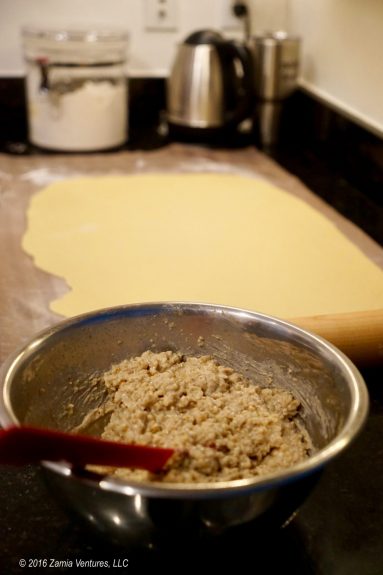
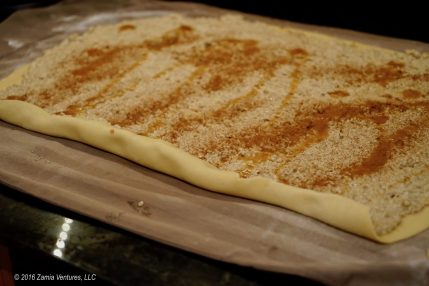
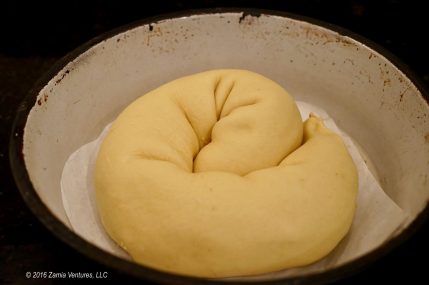

I have been enjoying this very much with my morning coffee. Thank you for making this delicious bread.
Now that you have my recipe you can make it, too!